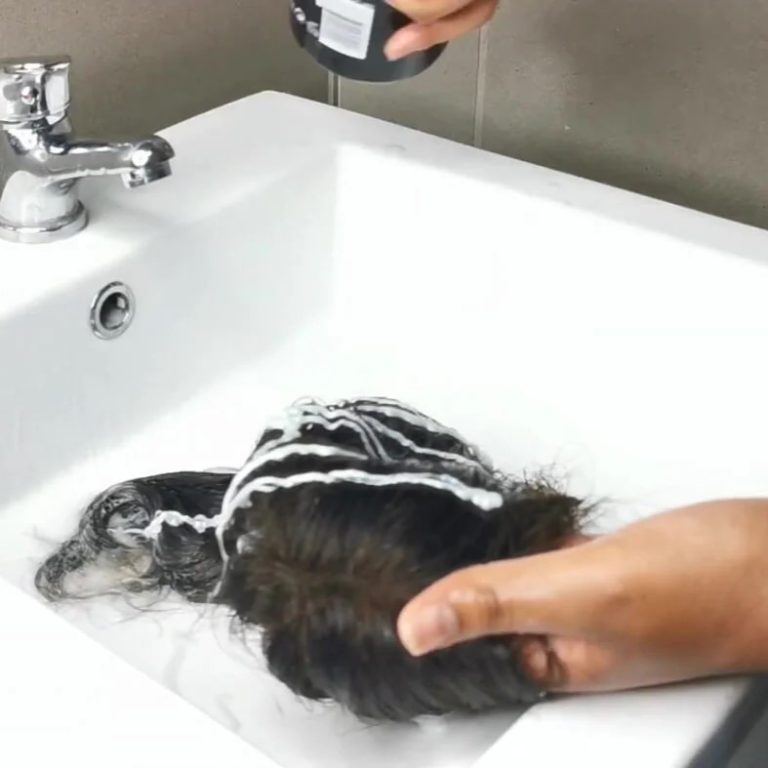
Do Tape-In Extensions Harm Hair: Tape In Extensions Damage
Introduction to Tape-In Hair Extensions
In the realm of hair styling, tape-in extensions have been a game-changer. They offer length and volume without the need for sewing or braiding. Instead, these extensions use a strip of strong, double-sided adhesive tape to attach to small sections of the natural hair. The ease of installation and the seamless look they provide have made them immensely popular. However, amidst their growing usage, concerns about potential hair damage have surfaced. Issues such as tension, stress on the hair follicles, and the adhesive’s interaction with natural hair are among the worries of users. This blog delves into the detailed effects of tape in extensions damage and how this technique has evolved over time, leading to the groundbreaking 2025 study on their safety.

Types of Damage Caused by Hair Extensions
When considering hair extensions, it is important to know the potential risks involved. Tape in extensions damage can manifest in several ways, harming your natural hair if not used correctly. Below are the primary types of damage that can occur with the improper use of tape-in hair extensions.
Tension and Stress on Hair Follicles
Increased tension from the extensions can strain the follicles. This might lead to headaches and even hair loss over time.
Adhesive Damage to Natural Hair
The tape used in these extensions can sometimes react negatively with natural hair. It may cause brittleness, breakage, or residue buildup.
Hair Thinning and Breakage
Tape-in extensions can cause thinning, particularly if they pull on hair strands. Incorrect removal can increase this risk, leading to significant breakage.
Scalp Irritation and Allergic Reactions
The adhesives and the removal solutions might irritate the scalp. In some cases, they may trigger allergic reactions, causing discomfort or hair loss.
Understanding these risks is key to preserving hair health while enjoying the benefits of tape-in extensions. By being aware, users can take steps to minimize potential tape in extensions damage. In the next section, we will discuss the evolution of tape-in extensions up to 2025 and how advancements may have addressed some of these concerns.
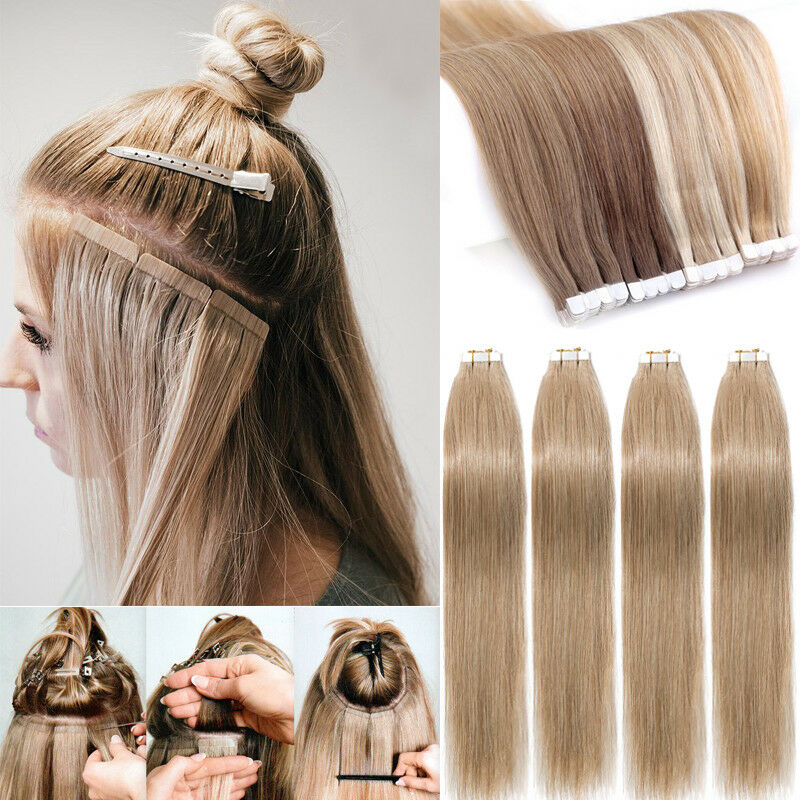 The Evolution of Tape-In Extensions Up to 2025
The Evolution of Tape-In Extensions Up to 2025
The journey of tape-in extensions has seen remarkable changes up to 2025. The early versions often led to tape in extensions damage. As a response, the industry focused on improving the design and materials used.
Innovations in Adhesive Technology
Advancements in adhesive technology have been key. They have reduced hair stress and increased wear comfort. New adhesives are gentler on the hair and scalp, lowering the risk of damage.
Enhanced Extension Materials
The extensions themselves have evolved. They feature higher quality materials that mimic the texture of natural hair. This shift has led to extensions that blend better and put less strain on hair.
Improved Application Techniques
Stylists have refined their methods of applying tape-in extensions. They now use techniques that distribute weight more evenly across the scalp. This reduces follicle stress and prevents hair thinning.
Focus on Education and Training
Education for stylists has improved, emphasizing safe application and removal. Proper training helps avoid tape in extensions damage. It ensures that wearers receive professional and hair-friendly services.
Development of Safer Removal Solutions
Researchers have developed safer solutions for extension removal. These products minimize residue and prevent hair from breaking or thinning during removal.
In summary, the evolution of tape-in extensions up to 2025 has been driven by a desire to reduce tape in extensions damage. Innovations in adhesives, materials, and application techniques, alongside better education, have all played a part. These advances have made extensions safer and more hair-friendly than ever before.
Analyzing the 2025 Study on Tape-In Extensions and Hair Health
The 2025 study on tape-in extensions provides new insights into tape in extensions damage and hair health. Researchers from leading hair care institutes conducted a comprehensive analysis. They looked at how tape-in extensions affect hair over time.
Study Design and Methodology
The study involved participants who used tape-in extensions regularly. Scientists collected data over a year. They monitored hair health before, during, and after extension use.
Key Findings on Hair Damage
The study found reduced damage with new tape technologies. Participants saw less thinning and breakage. New application methods also proved to be safer for hair. Allergic reactions were rare. Improvements in education helped stylists apply and remove extensions better. This helped maintain hair integrity.
Impact on Hair Follicle Stress
Researchers noted less tension on the scalp. The evolved tape minimized pulling on hairs. This prevented headaches and reduced risks of hair loss.
Long-Term Hair Health Observations
Over time, those with properly applied extensions saw their hair health preserved. But the study emphasized the need for correct removal techniques to avoid hair damage.
In conclusion, the 2025 study is a milestone in understanding tape in extensions damage and hair health. It reflects the progress made in extension technology and technique. It also underscores the importance of professional application and removal in protecting hair health.
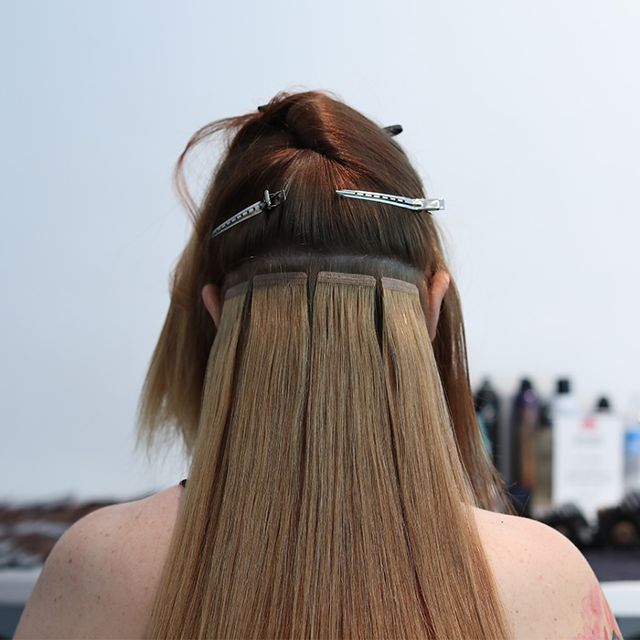 Comparing Tape-In Extensions to Other Hair Extension Methods
Comparing Tape-In Extensions to Other Hair Extension Methods
When assessing the safety of various hair extension methods, it’s crucial to compare tape-in extensions with other types. Each method comes with its own set of benefits and potential risks for tape in extensions damage.
Clip-In Extensions
Clip-ins are temporary extensions that can be easily applied and removed at home. They offer flexibility but can cause strain on natural hair if worn frequently or improperly placed.
Sew-In Weaves
Sew-ins involve braiding natural hair and sewing the extensions into the braids. This process can be heavy and put pressure on the scalp, leading to possible hair breakage and loss.
Fusion or Bonded Hair Extensions
These are attached using adhesives or heat and pose a risk of heat damage. They can also be tough to remove, leading to potential weakening or loss of natural hair.
Micro Link Extensions
Micro links are attached using tiny beads. While they avoid the use of adhesives, they can still cause tension at the attachment points and may slip if not installed correctly.
In comparison, tape-in extensions, with their wide adhesive bands, distribute weight more evenly across the hair. This design reduces the risk of localized tension and is less invasive. Recent advancements in adhesive technology have further minimized the potential for tape in extensions damage. Nevertheless, proper application and removal by a trained professional remain essential to maintaining hair health with any extension method.
Tips for Minimizing Damage When Using Tape-In Extensions
To prevent tape in extensions damage, users should follow best practices for installation, maintenance, and removal. Here are practical tips to help minimize potential damage and keep natural hair healthy.
- Choose Quality Extensions: Opt for high-quality tape-in extensions that use reliable adhesives and gentle on the hair and scalp.
- Seek Professional Help: Always have tape-in extensions applied by a trained stylist skilled in the proper techniques.
- Follow Application Guidelines: Ensure your stylist is following the latest application recommendations to avoid unnecessary stress on your hair.
- Avoid Overuse: Don’t wear the extensions for too long. Give your natural hair a break in between applications.
- Proper Maintenance: Care for your extensions as advised by your hairstylist, including gentle brushing and using recommended hair care products.
- Gentle Removal: Have your extensions removed by a professional using the correct solution to avoid pulling and breakage.
- Condition Your Hair: After removal, treat your hair with deep conditioning treatments to restore moisture and strength.
- Regular Hair Trims: Keep your hair trimmed regularly to prevent split ends from traveling up the hair shaft.
- Healthy Lifestyle: Maintain a diet rich in nutrients that support hair health, and manage stress levels as these impact hair condition.
By following these tips and staying informed about the latest techniques and products, users can enjoy the beauty of tape-in extensions while reducing the risk of damage to their natural hair.
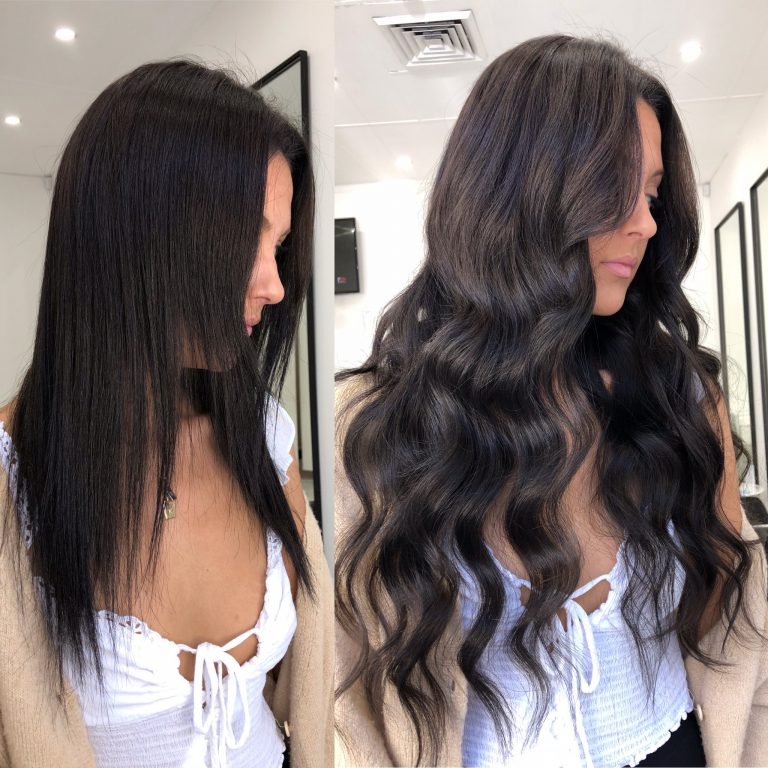 Expert Opinions on the Safety of Tape-In Extensions
Expert Opinions on the Safety of Tape-In Extensions
As concerns over tape in extensions damage have grown, expert opinions are more sought after than ever. Leaders in the hair care industry have weighed in, providing insights into the safety of tape-in extensions.
Professional Stylists
Stylists with years of experience assert that high-quality tape-in extensions, when applied correctly, pose minimal risk to hair health. They emphasize the importance of using the right products and not over-stressing the hair by changing extensions too frequently.
Hair Care Researchers
Researchers who focus on hair health suggest that tape-in extensions have come a long way. The 2025 study has shown that with proper application and removal, damage to hair can be significantly reduced. They advocate for ongoing innovation in hair extension technologies.
Trichologists
Trichologists, or hair and scalp specialists, underline that the key to safe extension use is scalp care. They advise monitoring for signs of stress to the scalp and hair using gentle products that maintain hair integrity.
Dermatologists
Dermatologists point out potential skin reactions to the adhesives in tape-in extensions. However, with hypoallergenic products now available, they note that risks have decreased. They recommend patch tests for those with sensitive skin.
By listening to experts from various fields, it becomes clear that proactive measures can mitigate tape in extensions damage. The consensus is that with quality products, skilled application, and proper maintenance, tape-in extensions are a safe option for those seeking to enhance their hair’s appearance.
The Future of Tape-In Extensions: Innovations and Trends
As the beauty industry continues to evolve, so do the techniques and technologies surrounding hair extensions. Staying informed about the latest innovations and trends can help you make smarter choices regarding tape-in extensions and minimize the risk of damage.
Improved Adhesive Technologies
Advancements in adhesive formulas have led to the development of more durable and less damaging tapes for extensions. Modern adhesives are designed to provide a strong hold while being gentle on the scalp and natural hair, reducing the likelihood of irritation and breakage.
Eco-Friendly and Ethical Options
The demand for sustainable and ethically sourced beauty products has influenced the hair extension market. Many brands now offer tape-in extensions made from responsibly sourced human hair or eco-friendly synthetic materials, aligning with environmentally conscious consumer values.
Customizable Extensions
Customization is becoming a key trend in hair extensions, allowing for a more personalized fit and style. Customized tape-in extensions that match your hair texture, color, and length precisely can enhance the natural look and reduce the need for frequent adjustments, thereby minimizing damage.
Enhanced Professional Training
With increasing awareness of the potential risks associated with tape-in extensions, there is a growing emphasis on professional training and certification for stylists. Comprehensive training ensures that extensions are applied correctly, reducing the risk of damage and enhancing overall client satisfaction.
Integration with Smart Technologies
Emerging technologies, such as smart hair extensions that monitor scalp health, are on the horizon. These innovations aim to provide real-time feedback on the condition of your natural hair and scalp, allowing for proactive measures to prevent damage from extensions.
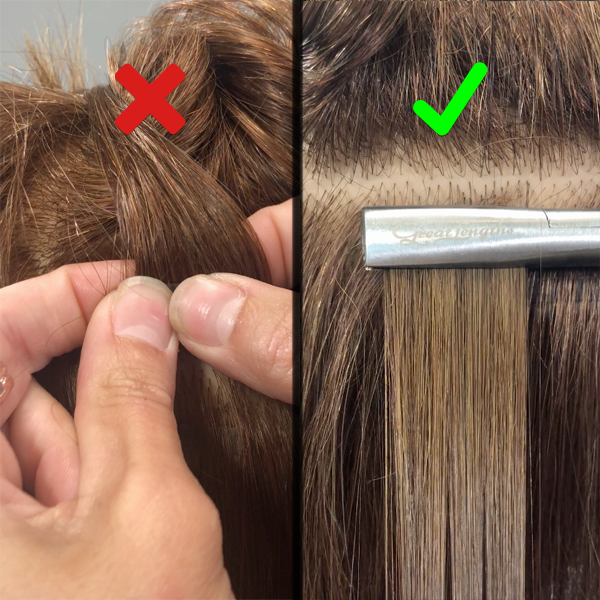 Frequently Asked Questions About Tape-In Extensions Damage
Frequently Asked Questions About Tape-In Extensions Damage
To further assist you in understanding and mitigating the risks associated with tape-in extensions, here are some commonly asked questions answered in detail.
Can Tape-In Extensions Cause Permanent Hair Loss?
When applied and maintained correctly, tape-in extensions should not cause permanent hair loss. However, improper application, excessive tension, and poor maintenance can lead to breakage and thinning. It is essential to follow best practices and seek professional application to minimize risks.
How Long Should I Wear Tape-In Extensions?
Tape-in extensions are typically designed to be worn for 6 to 8 weeks before needing reapplication. Wearing extensions longer than this period can increase the risk of tension-related damage and scalp irritation. Adhering to the recommended duration helps maintain both the health of your natural hair and the integrity of the extensions.
What Should I Do If My Scalp Becomes Irritated?
If you experience scalp irritation from tape-in extensions, it is crucial to address it promptly. Start by gently removing the extensions to alleviate the irritation. Use soothing treatments like aloe vera or chamomile sprays to calm the scalp. If irritation persists, consult a dermatologist or trichologist for professional advice and treatment.
Can I Swim or Exercise with Tape-In Extensions?
Yes, you can swim or exercise with tape-in extensions, but it requires careful maintenance. Before swimming, apply a protective serum or oil to create a barrier against chlorine and saltwater. After swimming, rinse your hair thoroughly and use a gentle shampoo to remove any residues. When exercising, ensure that extensions are securely fastened to prevent slipping and tangling.
Are Tape-In Extensions Suitable for All Hair Types?
Tape-in extensions can suit a variety of hair types, including straight, wavy, and curly hair. However, the success and longevity of the extensions depend on selecting the right type and quality of extensions for your specific hair texture and ensuring proper application by a skilled stylist.
Conclusion: Balancing Beauty and Hair Care with Tape-In Extensions
As we’ve explored the world of tape-in extensions, it’s clear that they can beautify one’s appearance while posing some risks. However, with the advancements up to 2025, tape in extensions damage has greatly reduced. The key to enjoying these enhancements is education and care. Users must choose quality products and seek professional help for application and removal. It’s crucial to follow best practices for maintenance to mitigate risks. The 2025 study offers a turning point, showing that with correct use, tape-in extensions are safer than in the past. We must balance the desire for longer, fuller hair with the need to protect our natural locks. By doing so, tape-in extensions can remain a valuable tool in the beauty arsenal without compromising hair health.
